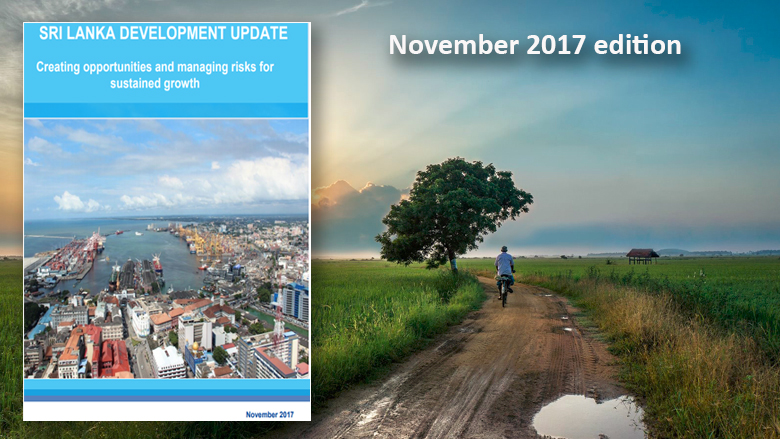The most recent edition of the World Bank’s Sri Lanka Development Update—which analyses key developments in Sri Lanka’s economy over the past six months—finds the country at a critical moment in time. Now firmly in the post-war era, the island nation must look to the future, embracing every opportunity to combat poverty, create new jobs and build a resilient, robust economy.
Its best chance of success lies in an ambitious and challenging shift from a public investment, non-tradable sector-driven growth model to a more private investment, tradeable sector-led model. It is a sea change that will allow the country to benefit from its location close to some of the largest, fast-growing economies in the world.
The second Development Update for 2017, the report begins by noting that corrective policy measures taken in the monetary and fiscal fronts have led to gradual stabilization, and that overall, Sri Lanka’s economic performance remained broadly satisfactory in the first half of 2017.
A particularly noteworthy milestone on the road to sustainable, revenue-led fiscal consolidation came in the form of a new Inland Revenue Law, passed by Parliament in September 2017. Value Added Tax (VAT) reforms, in their first year of implementation, are expected to drive fiscal consolidation. Supported by a small primary balance, the overall fiscal deficit is expected to fall to 5.1 percent of GDP for 2017, thanks mainly to the implementation of revenue measures. As a result, the debt-to-GDP ratio is expected to stabilize in 2017 compared to 2016, having risen continuously since 2012.
The country also regained tariff-free access for most exports under the Generalized System of Preferences Plus (GSP+) from the European Union in May 2017—though it is yet to be in full compliance.
While such successes indicate progress, vital reforms are lagging behind, caution the report’s authors. Among these are the One-Stop Shop for FDI, reforms to the investment climate and trade, and SOE reforms such as for Sri Lankan Airlines. In addition, meaningful progress is yet to be made on the debt management agenda and passing of the Audit Act.
Sri Lanka has ambitions of graduating to upper middle-income country status but to realise its full potential, the island will have push the reform agenda and revitalise its economy.
Laying out the challenges ahead, Ralph van Doorn, the Senior Country Economist for Sri Lanka and the Maldives, said: “To get there, Sri Lanka must maintain macro-fiscal stability and increase its resilience to natural disasters. While pursuing structural reforms to promote competitiveness and attract more FDI, the country cannot afford to forget its poor or vulnerable. Policy instruments are the answer here—innovatively deployed, they can support structural adjustment, protect those adversely impacted by reforms, and provide transparency and accountability.”


